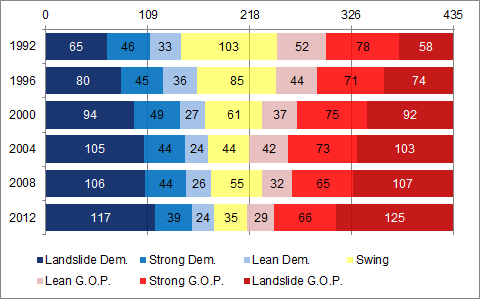As Swing Districts Dwindle, Can a Divided House Stand?
Nate Silver seems to agree with Robert Reich....
Nate Silver seems to agree with Robert Reich… or Robert Reich agrees with Nate Silver.
In this article, Nate Silver uses data to explain why politics is so intensely partisan.
The short answer seems to be, since more and more districts are “safely” Republican or Democrat, the candidates in those districts don’t fear losing elections, instead, they fear losing primaries. Meaning Republicans fear challengers from the right, so they move ever more right (and vice versa I suppose, that just doesn’t seem as obvious to me).
As these figures make clear, the number of swing districts has been on a steady decline since at least 1992, and the number of landslide districts on a steady rise. The year 2008 was a partial exception: the number of landslide districts rose slightly from 2004, but so did the number of swing districts. However, the polarization of Congressional districts became sharper again in 2012.
